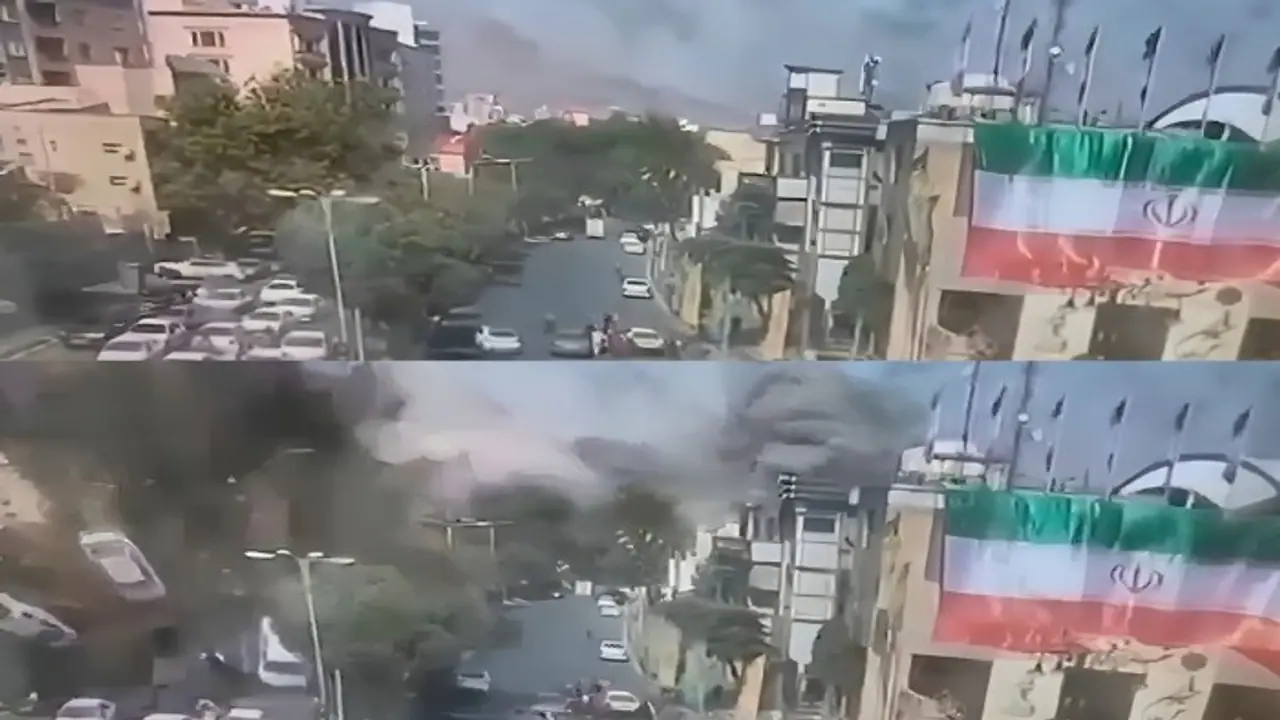Iranian media has released new footage showing an Israeli airstrike in Tehran, reportedly part of Operation Rising Lion. The attack, confirmed by satellite images, targeted missile and nuclear sites, intensifying the growing conflict.
Iranian state media released fresh video footage today, claiming it shows the moment an Israeli airstrike hit Tehran as part of Operation Rising Lion. In the footage, multiple cars are seen being thrown into the air by a powerful blast. The explosion reportedly occurred near sensitive government and security buildings, though exact locations have not been confirmed.

The release of this video comes as the Israel-Iran conflict enters its third day, with both sides launching missile strikes and tensions rising sharply across the region.
Major damage at Iranian missile and nuclear sites
The Israeli strike in Tehran is part of a larger, coordinated military operation launched by Israel on June 13. According to Israeli officials, Operation Rising Lion was aimed at halting Iran’s nuclear and missile development programs.
New high-resolution satellite images analysed by Planet Labs and reviewed by the Associated Press confirm massive destruction at two key Iranian missile bases in Kermanshah and Tabriz. These facilities were part of Iran’s growing missile infrastructure, according to Israeli and Western intelligence.
71 killed were killed when Evin Prison was hit
Iran has accused Israel of carrying out an airstrike on Evin Prison in Tehran during the campaign. The Iranian judiciary confirmed that 71 people were killed in the attack and released images showing severe damage to the prison’s medical areas, visiting rooms, and waiting halls.
Iranian judiciary spokesperson Asghar Jahangir called the strike "a brutal act" and said the country would respond in due time.
Israel confirms operation details
Israeli Prime Minister Benjamin Netanyahu announced Operation Rising Lion last month, stating it was launched after intelligence confirmed that Iran was preparing to build nuclear weapons and advance its missile production.
Israel Defense Forces (IDF) spokesperson Effie Defrin described the operation as necessary to counter an "existential threat." He said Mossad and the US provided intelligence and logistical support for the strikes.
Two parallel operations were also conducted:
- The Red Wedding, which reportedly killed several top Iranian air force officials.
- Operation Narnia, which targeted and killed nine leading nuclear scientists.
Ceasefire holds after intense week of strikes
The war between Israel and Iran began on June 13, when Israel launched coordinated strikes on Iranian nuclear facilities and assassinated key commanders and scientists. Iran responded with a wave of missile and drone attacks. The conflict escalated further on June 22, when the United States carried out a heavy airstrike using bunker-buster bombs on Iran’s nuclear sites.
A ceasefire was negotiated on June 24 with the help of US President Donald Trump, but it was briefly violated by Israeli airstrikes soon after the announcement. While Iran initially denied the breach, Trump publicly warned Israel not to continue bombing Iran, calling it a “major violation.” The US later confirmed that the truce was in effect, and Trump declared that Iran’s nuclear capability had been “neutralised.”
Iran has since officially confirmed that its enrichment facilities were severely damaged in the US-led strikes. Foreign Ministry spokesperson Esmail Baghaei told reporters that Iran’s nuclear infrastructure had been hit hard, saying the damage was “for sure.” Despite the tensions, the ceasefire currently remains in place.


